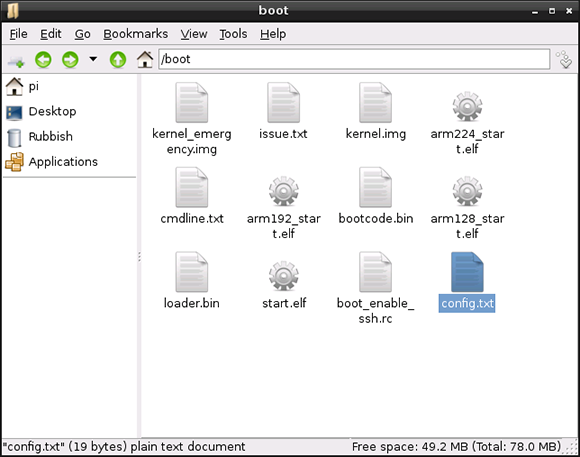Chapter 6: Configuring the Raspberry Pi
Because of its origins in embedded computing, the BCM2835 chip at the heart of the Raspberry Pi doesn’t have anything like a PC’s BIOS menu where various low-level system settings can be configured. Instead, it relies on text files containing configuration strings that are loaded by the chip when the power is switched on.
Before taking a look at the various options available in these files—config.txt, cmdline.txt and start.elf—a word of warning: changing some of these settings away from their defaults can result in a Pi that, best case, doesn’t boot until the files are reverted and, worst case, can physically damage the system. These potentially dangerous settings will be highlighted with warnings in this chapter.
Hardware Settings—config.txt
The Pi’s hardware is controlled by settings contained in a file called config.txt, which is located in the /boot directory (see Figure 6-1). This file tells the Pi how to set up its various inputs and outputs, and at what speed the BCM2835 chip and its connected memory module should run.
Figure 6-1: The contents of the /boot directory, with config.txt highlighted

If you’re having problems with graphics output, such as the image not filling the screen or spilling over the edge, config.txt is where you’ll be able to fix it. Normally, the file is empty or—on some distributions—simply not present; this ...
Get Raspberry Pi User Guide now with the O’Reilly learning platform.
O’Reilly members experience books, live events, courses curated by job role, and more from O’Reilly and nearly 200 top publishers.

